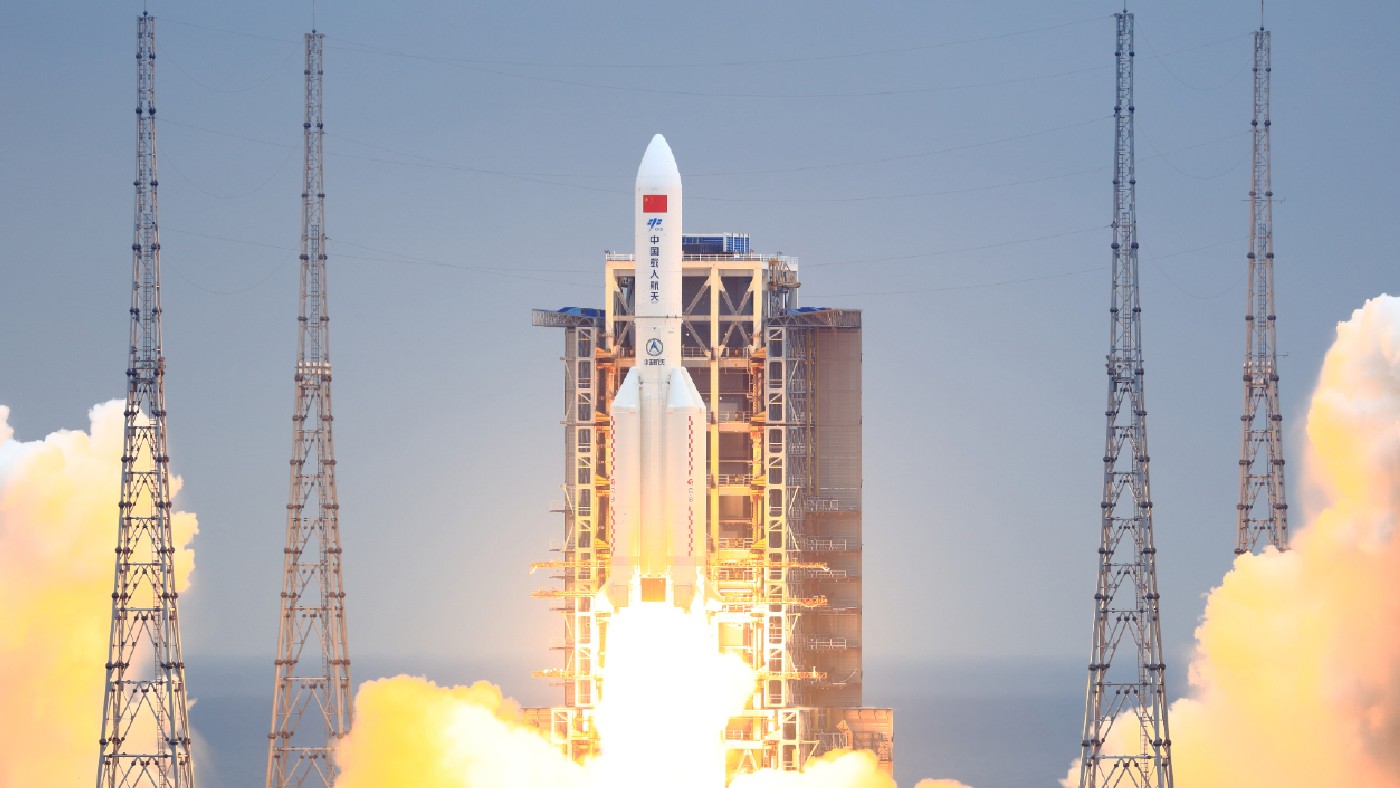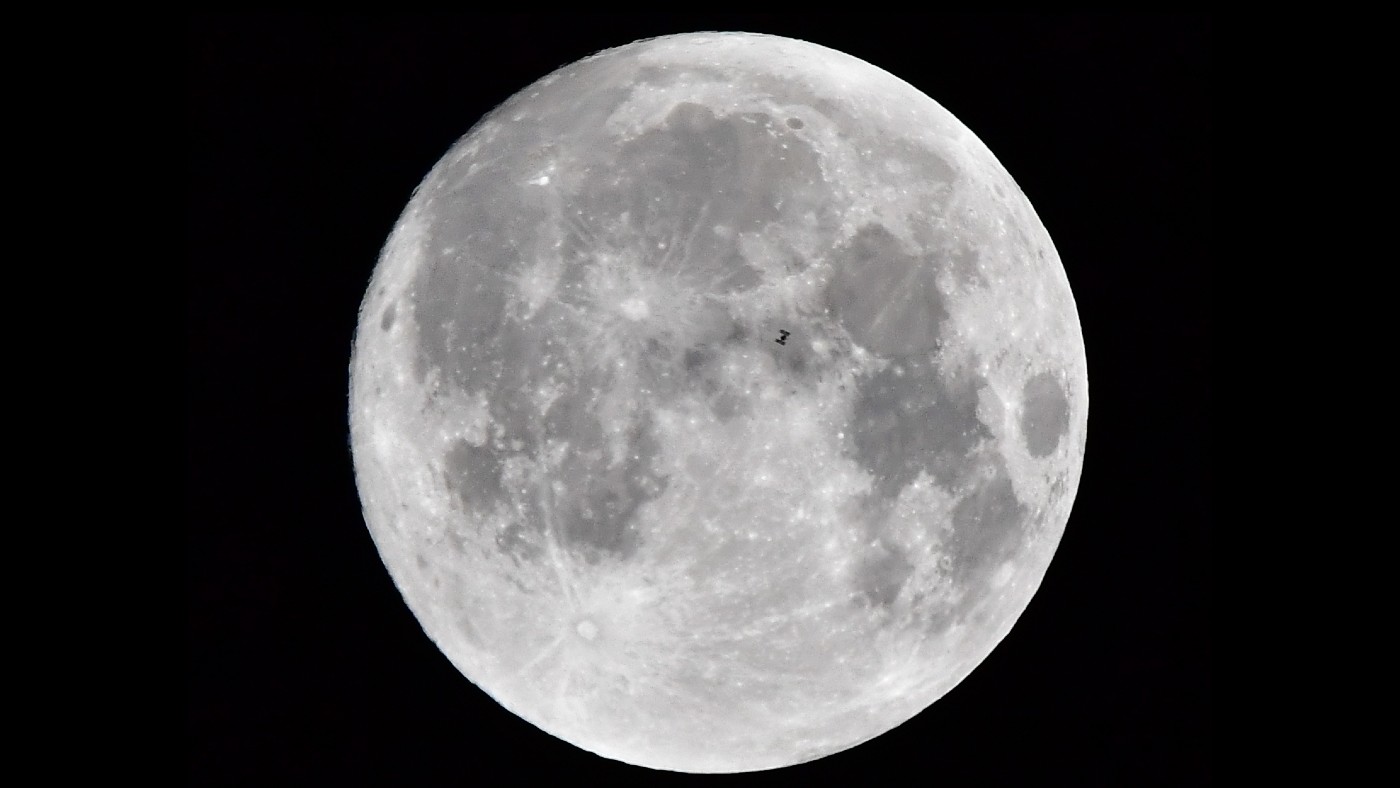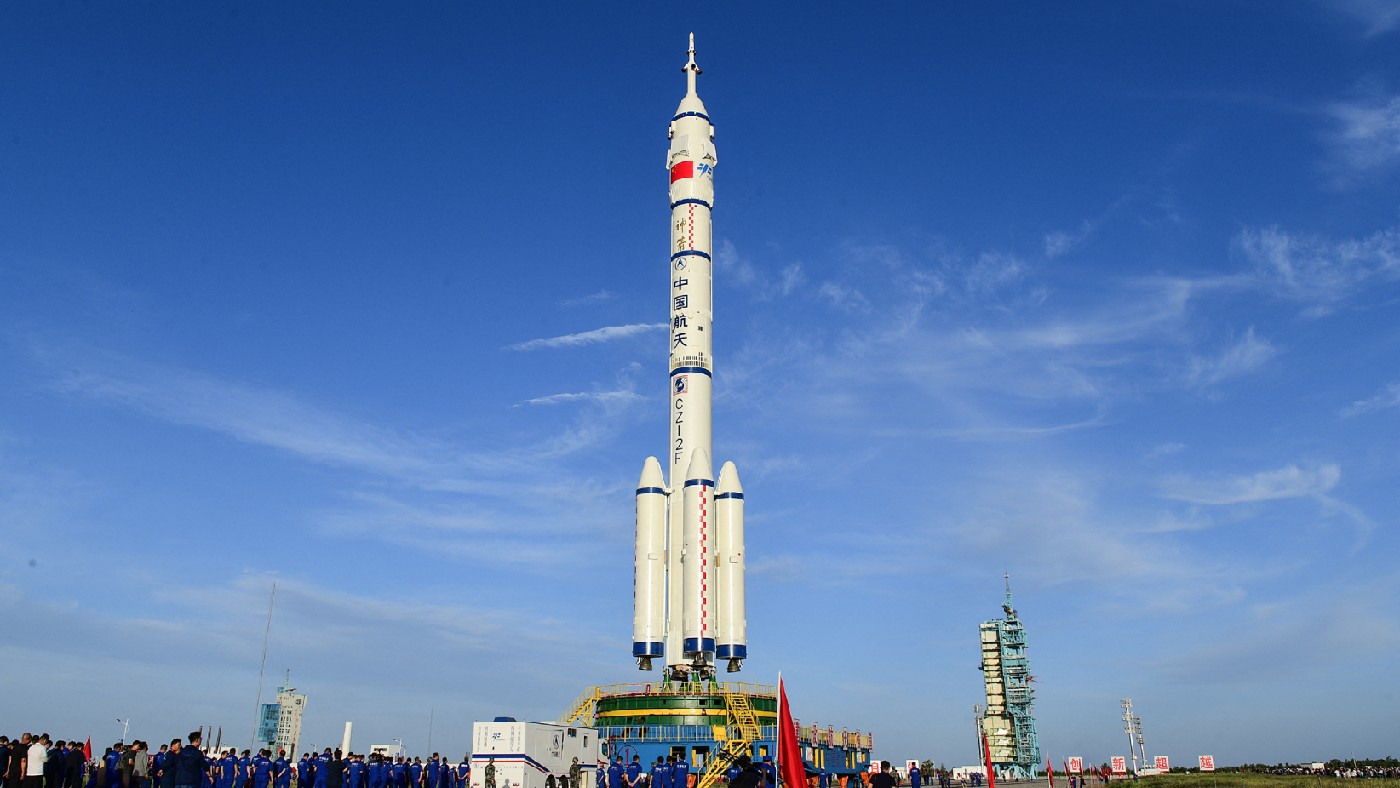Everything you need to know about China’s space race
It has landed craft on Mars and on the dark side of the Moon, and it is building a space station. What are China’s ambitions in space?

Space exploration has been a long-term goal for the People’s Republic ever since the Soviet Union launched Sputnik 1 in 1957. Chairman Mao lamented at the time that “we cannot even put a potato into space”, and the Communist Party leadership vowed to produce “two bombs and a satellite”: an atomic bomb, a hydrogen bomb, and a satellite.
China did not launch its first satellite until 1970, but since the 1980s it has been catching up fast with the major spacefaring nations. Its space programme really announced itself to the world in 2003, when Yang Liwei became its first taikonaut (as China calls its astronauts), orbiting the Earth 14 times during a 21-hour flight aboard the Shenzhou 5 spacecraft. China thus became the third nation to independently send astronauts into space.
What are its ambitions now?
The Week
Escape your echo chamber. Get the facts behind the news, plus analysis from multiple perspectives.

Sign up for The Week's Free Newsletters
From our morning news briefing to a weekly Good News Newsletter, get the best of The Week delivered directly to your inbox.
From our morning news briefing to a weekly Good News Newsletter, get the best of The Week delivered directly to your inbox.
Under President Xi Jinping, plans for China’s “space dream”, as he calls it, have gone into overdrive. It aims not only to pass the milestones achieved by other nations, notably the US, but to overtake them as the leading space power by 2045.
The China National Space Administration had an annual budget of about $8.9bn last year, second only to Nasa’s (of around $23bn). It has landed rovers on the Moon and, more recently, on Mars. Last year, it completed the BeiDou satellite constellation, a rival to the US Global Positioning System. This year, it launched the first part of a permanent space station into orbit (debris from a Long March-5b launch rocket fell back into Earth’s atmosphere on an “undirected dive”, crashing into the Indian Ocean).
What has China achieved on the Moon?
The first mission in China’s lunar exploration programme, Chang’e 1, reached the Moon’s orbit in 2007. Six years later, it landed a robotic rover on the lunar surface, which operated for 31 months. Other nations had achieved such feats before, but China has pioneered too: in 2019, Chang’e 4 became the first spacecraft to land on the far side of the Moon – which faces away from the Earth, making it difficult to communicate with space-craft there.
A free daily email with the biggest news stories of the day – and the best features from TheWeek.com
At the end of 2020, the fifth Chang’e mission scooped up a few kilograms of rock and brought them back to Earth – the first lunar sample-return mission since the final Soviet Moon mission in 1976. Three more lunar missions are planned by 2027, to prepare the ground for a future Chinese base (potentially built in collaboration with the Russian space agency, Roscosmos) that would be permanently inhabited by taikonauts.
What about the space station?
In late April, China launched Tianhe, the first module of what will become a new space station, Tiangong (“Heavenly Palace”). Two further modules will be added to Tianhe next year, which will provide laboratory space for research on everything from the long-term impacts of living in microgravity to studying how fluids and materials behave beyond Earth.
Alongside its space station, China also wants to launch a space telescope, similar in size to Nasa’s Hubble telescope. When complete, Tiangong will be able to accommodate three taikonauts for long-term missions or six for shorter trips. Astronauts from other countries would also be allowed to visit the space station; Tiangong will become operational by 2023, just as the International Space Station comes to the end of its operational life.

What drives China’s programme?
China is determined to be the world’s science and technology superpower. A space programme is a tried-and-tested way for a nation to enhance its industrial and economic strength, and also project prestige and technical competence to its own citizens – and to the rest of the world. China sees its space capability as important for economic and diplomatic leverage: it is trying, for instance, to persuade countries to dump the US’s GPS satellite navigation in favour of its BeiDou system.
From China’s perspective, it has little choice but to build its own ambitious space programme: concerns about technology theft mean its scientists have been banned by the US Congress since 2011 from working with Nasa, and shut out from projects such as the International Space Station. And in today’s networked world, space technology is critical not just to the financial system, for example, but to national security.

Does China want to militarise space?
“Space is already an arena of great power competition,” Lloyd J. Austin III, the new US secretary of defence, declared recently. Satellite networks are used to keep military information systems running; both the US and China have the capacity to knock out enemy satellites in the event of a conflict. The situation is made more complex because most space technologies are “dual-use”: they can be used to perform civilian or military tasks.
Understanding China’s aims is made difficult by the country’s opaque policy-making apparatus, and by President Xi’s “military-civil fusion development strategy”, which purposely blurs the lines between military and civilian technology development on everything from semiconductors and 5G to aerospace and AI.
What else is China planning?
China wants to send a second lander to Mars by 2028 and, eventually, to bring samples back from the red planet. That next phase of Mars exploration could become a genuine race with Nasa and the European Space Agency, which are working together on an ambitious sample-return mission of their own. Future missions could also include a sample-return mission from an asteroid, a fly-by of a comet, and orbiting observatories for Venus and Jupiter.
China is continuing to develop new spacecraft too. There are rumours that it is working on a reusable space plane. And China’s space administration reportedly wants to beat Nasa in the race to take astronauts to Mars.
Landing on the red planet

In a matter of months, China’s Mars mission, Tianwen (meaning “Heavenly Questions”), has completed a stunning trio of achievements: it entered orbit in February, landed on the surface of the red planet (at Utopia Planitia) on 14 May and, a few days later, sent its Zhurong rover (named after a Chinese god of fire) trundling onto the rocky ground.
Getting to Mars is hard, but landing is much harder: Nasa calls the descent through its super-thin atmosphere the “seven minutes of terror”. The Soviet Union landed a craft on Mars in 1971, but it stopped communicating shortly after it reached the surface. Only the US had previously managed successful Mars landings – the most recent being the Perseverance rover in February.
Zhurong weighs in at around 240kg, a quarter of the mass of Nasa’s Perseverance, but similar to the Spirit and Opportunity rovers that landed on Mars in 2004. Like those older Nasa rovers, Zhurong is powered by solar panels (Perseverance uses nuclear-powered batteries). Its instruments, including cameras, ground-penetrating radar and a magnetic field detector, will study the planet’s surface, topography, atmosphere and geology, and in particular the distribution of ice – which could be a useful resource for human visitors.
-
 ‘City leaders must recognize its residents as part of its lifeblood’
‘City leaders must recognize its residents as part of its lifeblood’Instant Opinion Opinion, comment and editorials of the day
-
 10 upcoming albums to stream during the winter chill
10 upcoming albums to stream during the winter chillThe Week Recommends As the calendar turns to 2026, check out some new music from your favorite artists
-
 Kristi Noem might not be long for Trumpland
Kristi Noem might not be long for TrumplandIN THE SPOTLIGHT The Homeland Security secretary has been one of the most visible and vocal architects of Trump’s anti-immigration efforts, even as her own star risks fading
-
 Femicide: Italy’s newest crime
Femicide: Italy’s newest crimeThe Explainer Landmark law to criminalise murder of a woman as an ‘act of hatred’ or ‘subjugation’ but critics say Italy is still deeply patriarchal
-
 Brazil’s Bolsonaro behind bars after appeals run out
Brazil’s Bolsonaro behind bars after appeals run outSpeed Read He will serve 27 years in prison
-
 Americans traveling abroad face renewed criticism in the Trump era
Americans traveling abroad face renewed criticism in the Trump eraThe Explainer Some of Trump’s behavior has Americans being questioned
-
 Nigeria confused by Trump invasion threat
Nigeria confused by Trump invasion threatSpeed Read Trump has claimed the country is persecuting Christians
-
 Sanae Takaichi: Japan’s Iron Lady set to be the country’s first woman prime minister
Sanae Takaichi: Japan’s Iron Lady set to be the country’s first woman prime ministerIn the Spotlight Takaichi is a member of Japan’s conservative, nationalist Liberal Democratic Party
-
 Russia is ‘helping China’ prepare for an invasion of Taiwan
Russia is ‘helping China’ prepare for an invasion of TaiwanIn the Spotlight Russia is reportedly allowing China access to military training
-
 Interpol arrests hundreds in Africa-wide sextortion crackdown
Interpol arrests hundreds in Africa-wide sextortion crackdownIN THE SPOTLIGHT A series of stings disrupts major cybercrime operations as law enforcement estimates millions in losses from schemes designed to prey on lonely users
-
 China is silently expanding its influence in American cities
China is silently expanding its influence in American citiesUnder the Radar New York City and San Francisco, among others, have reportedly been targeted